Nestled in Iran‘s historic landscape hides a unique geological phenomenon, the Salt Mountain of Iran. Known as Kuh-e-Namak in the local language, the location is renowned for its breathtaking beauty and geological significance. This arid, alien-esque panorama, with its multi-hued salt crystals and intricate structures, has become an intriguing destination for visitors worldwide.
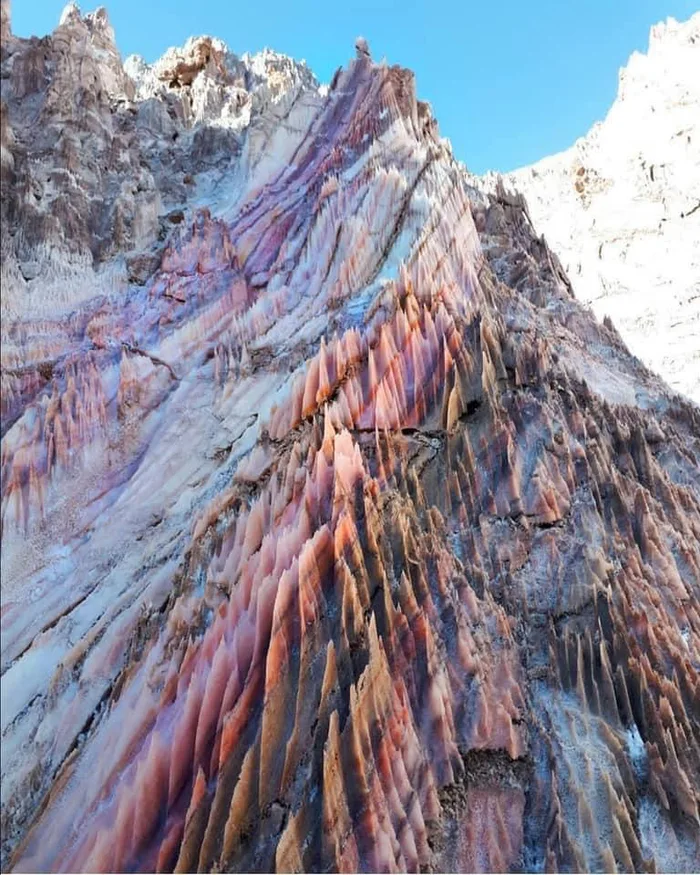
Located near Qom city, some 140 kilometers south of Tehran, the Salt Mountain, despite its less-publicized status, is an underrated gem in Iran’s treasure trove of natural scenery(2). Enclosed in Iran’s dry desert terrain, the mountain unfolds its dynamic visual representation during sunrise and sunset. As the sunlight dances on the salt crystals, the landscape transitions through an array of colors, offering a powerful visual display to onlookers.
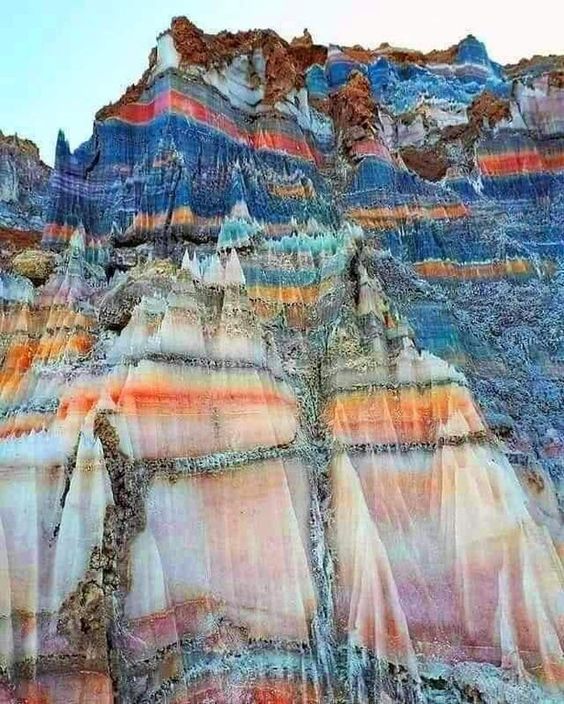
Structurally, the Salt Mountain constitutes a large part of Iran’s geological history. Unlike traditional mountains, it is composed almost entirely of salt deposits, giving it a distinct, gleaming white appearance. These deposits, remnants of an ancient ocean that existed millions of years ago, have gradually accumulated over time, creating this extraordinary produce of nature.
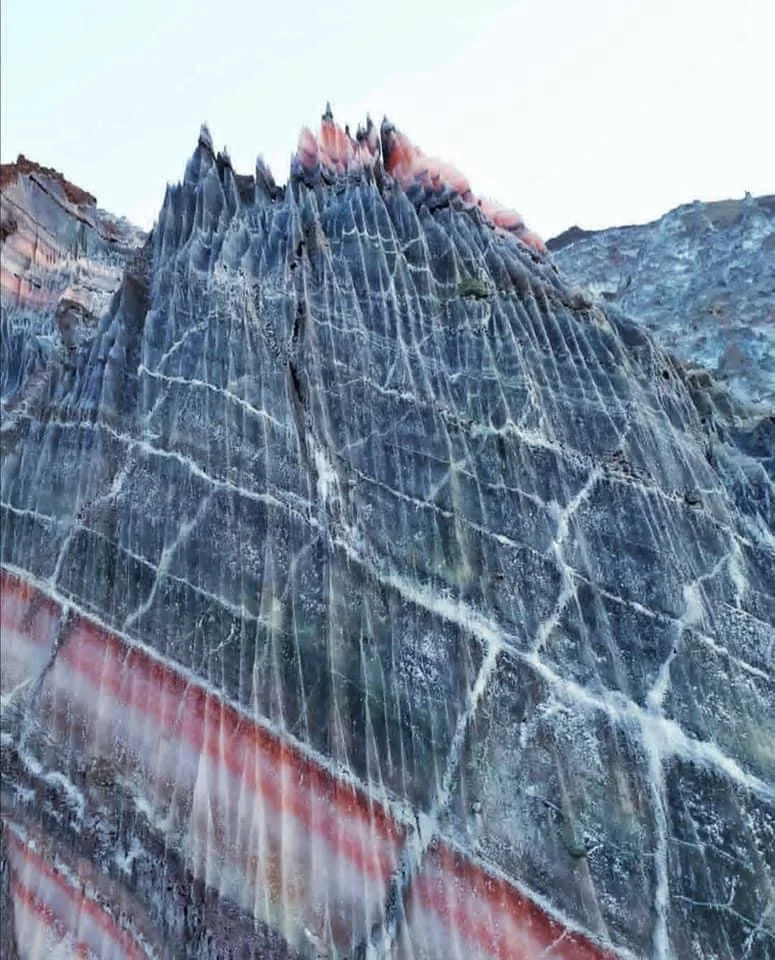
The salt has not only shaped the mountain’s appearance, but over time, it has carved out unique structures and formations. The mountain displays evidence of its geological past, presenting a richly diversified formation of halite layers, gypsum, and anhydrous salt. Geologists reference these formations to study the Earth’s various historic periods and climatic changes over millennia.
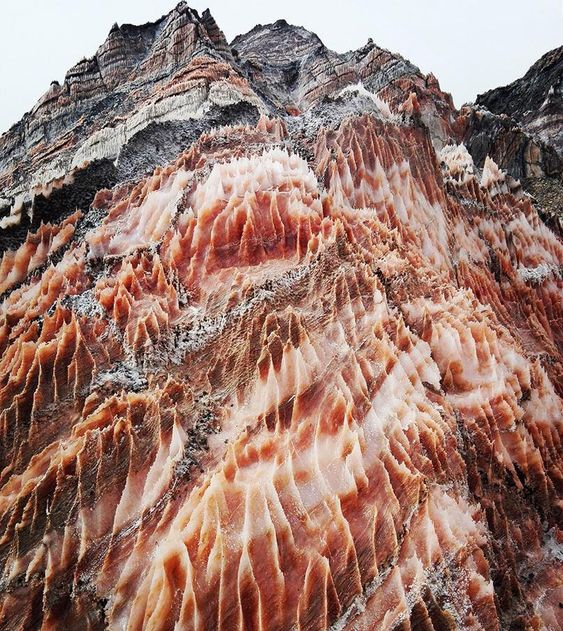
Furthermore, the mountain is home to natural salt caves, some of which are considered among the longest and most complex in the world (5). These caves feature a variety of unusual geological formations, such as salt stalactites and stalagmites, revealing an intricate display of Mother Nature’s masterpiece. They hold immense scientific interest and are a favorite among spelunkers and geology enthusiasts.
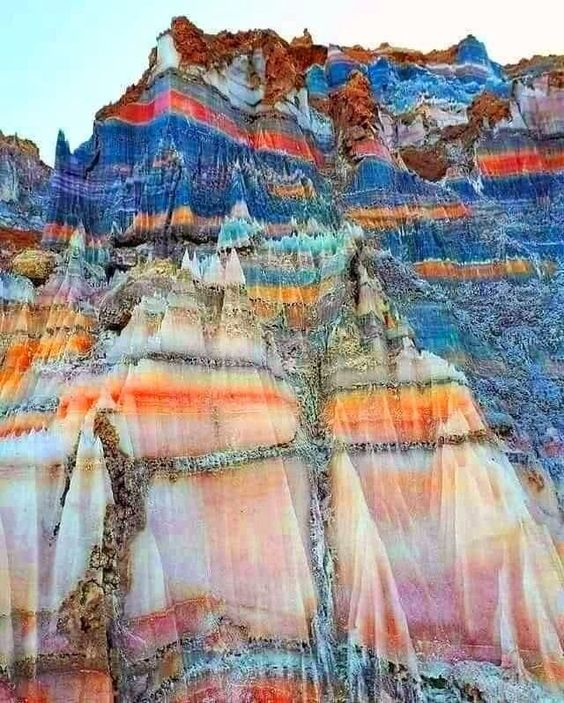
However, the Salt Mountain does not simply exist for geological study. It provides livelihoods for many locals in the surrounding area. Artisans harvest salt from the mountain, which is later refined and sold. The salt, known for its purity and therapeutic properties, has boosted the local economy for many years.
Yet, despite its geological importance and economic significance, the Salt Mountain remains a relatively underexplored part of Iran’s natural terrain. More efforts are needed to promote this majestic site and encourage sustainable tourism, ensuring that this geological marvel continues to fascinate and educate for generations to come.

